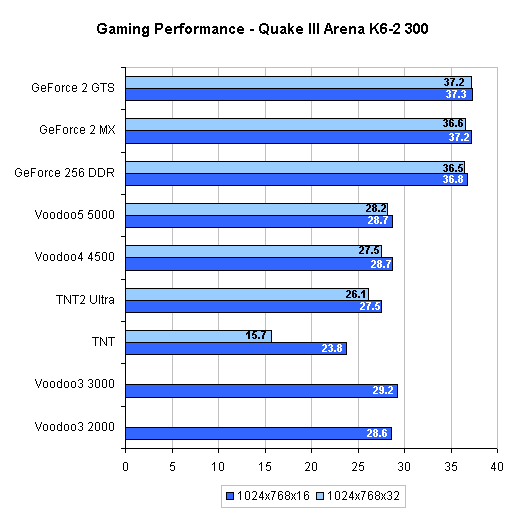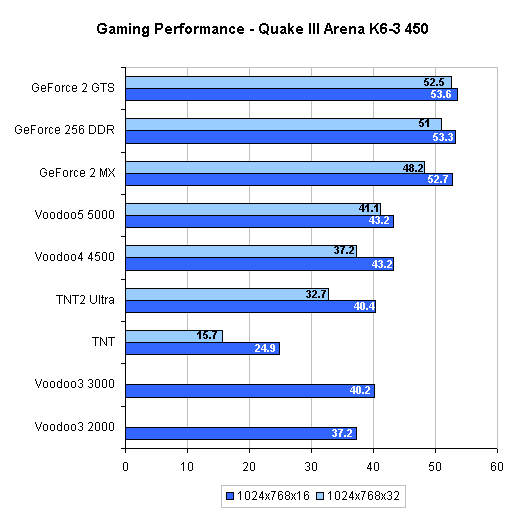Video Card Upgrade - Gaming Performance
This time we have separated the graphs into a K6-2 300 MHz system graph and a K6-3 450 MHz graph to demonstrate the performance of the video cards on the two different systems. Let's see how the processors fair with a variety of video cards.
Quake III Arena

With three previous upgrade attempts resulting in very little 3D performance gain, it is nice to finally find an upgrade that makes Quake III Arena playable at 1024x768x32. Even a modest upgrade from the base TNT to a TNT2 Ultra results in over a 10 FPS gain. The item to note is that after GeForce 256 DDR and the GeForce2 MX, performance pretty much levels out. As you can see, going from the GeForce2 MX to the much more powerful GeForce2 GTS results in no noticeable increase in frame rate. This is because we are finally hitting the limitation of our system, not our video card. At 1024x768x32, the K6-2 300 MHz system is limited to a maximum framerate of about 37 FPS. This speed is totally limited by the CPU, thus even the extremely fast GeForce 2 Ultra would not be able to fix the K6-2 300's problems. Let's take a look and see how the K6-3 450 MHz system responds to our video card test.

On the faster K6-3 system we find results very similar to those of the K6-2 system, this time with nearly every score going up. In this case, the jump out of the TNT and into the TNT2 Ultra results in a 108% increase in speed when in 32-bit color. Moving up to the GeForce2 MX, we find that the performance difference between the TNT card and the faster MX is an astounding 207% faster.
The same trend of a leveling off framerate is see in the K6-3 system. Once again, the framerate stops improving drastically around the GeForce2 MX and the GeForce 256 DDR, once again showing that a system bottleneck is being reached.










0 Comments
View All Comments